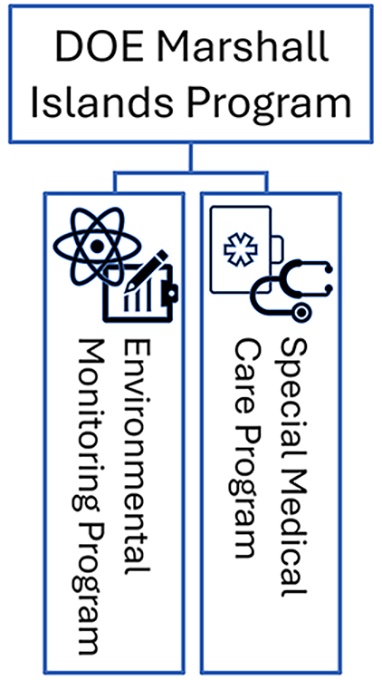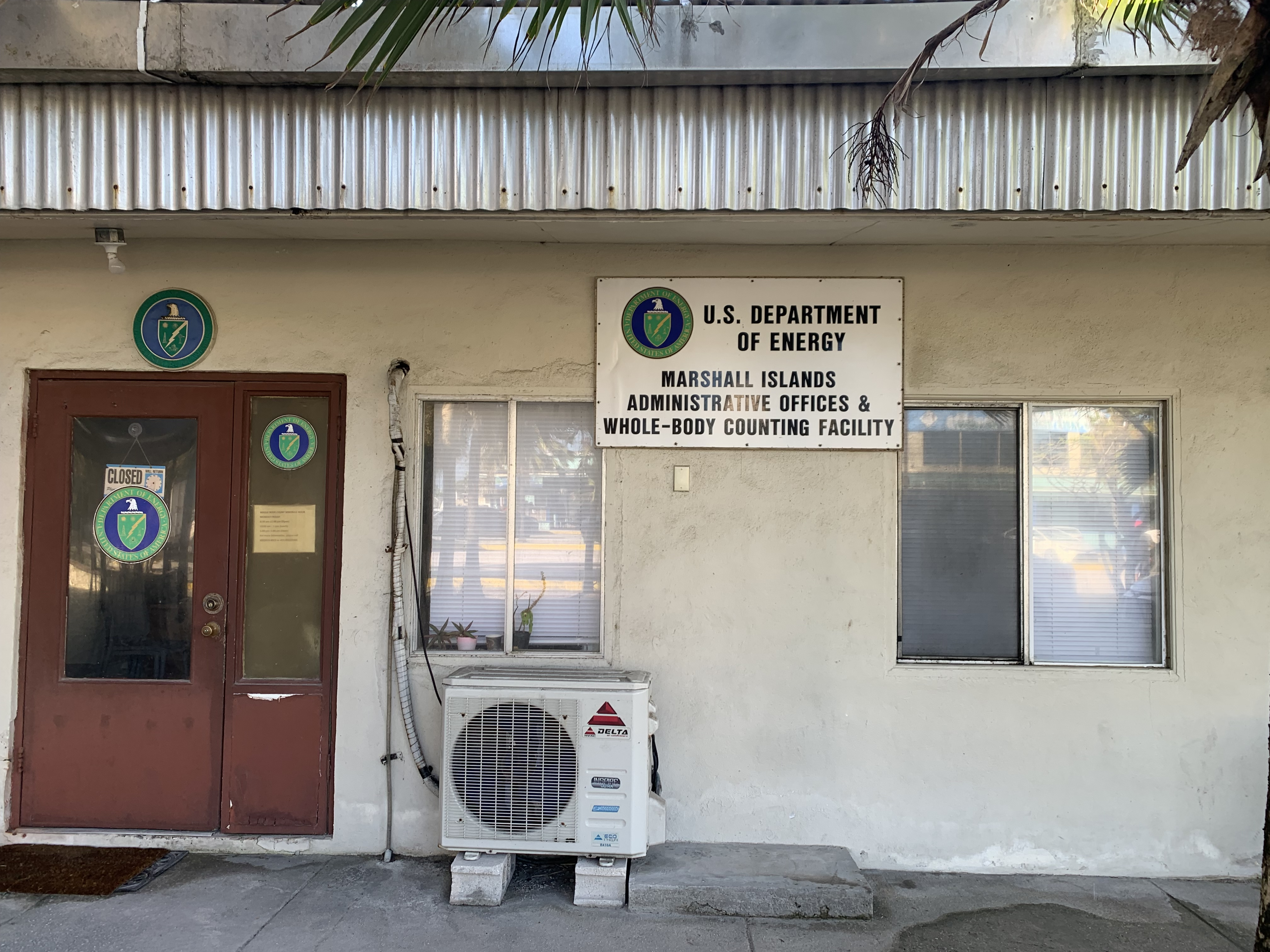
The Marshall Islands Program was established in 1977 by the Energy Research and Development Administration, the predecessor Agency to the Department of Energy (DOE). The program is the U.S. response to the legacy of nuclear testing that occurred in the Republic of the Marshall Islands from 1946 to 1958. Program activities fall into two main areas and focus on the Atolls of Bikini, Enewetak, Rongelap, and Utrik (Figure 1):
- Special Medical Care Program: Provides ongoing cancer screening and treatment for individuals directly exposed to radiological contamination from the March 1954 Castle Bravo test.
- Environmental Monitoring Program: Provides technical assistance to characterize and monitor the level and distribution of radiological contamination in the environment, monitor radiation exposures in local populations, and support decisions regarding resettlement, land use, and cleanup.
Special Medical Care Program

DOE provides cancer screening and treatment in conjunction with comprehensive care provided through the Four Atolls Healthcare Program administered by the U.S. Department of the Interior (DOI). DOE’s mandate is explicitly limited to the specific populations on Utrik and Rongelap Atolls directly exposed to fallout from the 1954 Castle Bravo test identified in Section 103 of the original 1986 Compact of Free Association (COFA) and reaffirmed in the Second (2004) and Third (2024) COFAs.
DOE does not have the authority to expand the patient population eligible for screening and treatment under the current framework. Congress requires DOE to submit an annual report on the DOE Special Medical Care Program. The latest reports can be found below:
- FY 2022 Marshall Islands Medical Program Annual Report to Congress
- FY 2020/FY 2021 Marshall Islands Medical Program Annual Report to Congress
- FY 2019 Marshall Islands Medical Program Annual Report to Congress
- FY 2018 Marshall Islands Medical Program Annual Report to Congress
- FY 2017 Marshall Islands Medical Program Annual Report to Congress
- FY 2016 Marshall Islands Medical Program Annual Report to Congress
Environmental Monitoring Technical Assistance Program

DOE’s ongoing Environmental Monitoring Technical Assistance Program aims to provide relevant information about public and environmental health as well as resettlement and land use for nuclear effected atolls to RMI decision makers and stakeholders. Bikini, Enewetak, Rongelap, and Utrik atolls are all part of the program to characterize the radioactive materials remaining in the environment and in local food plants growing on the islands.
Technical assistance needs are identified through engagement with RMI national or local government representatives. Authority is derived from Article II, Section 1(a) of the 177 Agreement from the original and second COFA agreements and Section 224 of the second COFA agreement (referred to as Section 226 in the first COFA agreement).
Two major issues of the journal “Health Physics” — Volume 73 (Issue 1) July 1997 and Volume 99 (Issue 2) August 2010 — present the major research findings from decades of environmental surveys and analyses.
Other major environmental reports prepared by the DOE Lawrence Livermore National Laboratory are available on their web page at https://marshallislands.llnl.gov.
Runit Dome Monitoring
The Cactus Crater Containment Structure (“Runit Dome” or simply “the Dome”) on Runit Island in Enewetak Atoll was created as part of the remediation efforts taken by the U.S. government following the cessation of nuclear testing. While the radiological inventory contained within Runit Dome is small compared to that within the surrounding lagoon, it remains a major concern for the people of the Republic of the Marshall Islands.
Climate Change
The impacts of climate change are particularly acute in RMI as a low-lying Island nation that spans over 750,000 square miles of the Southern Pacific Ocean. The National Defense Authorization Act for Fiscal Year 2022 directed DOE to “…conduct a study on the impacts of climate change on the “Runit Dome” nuclear waste disposal site in Enewetak Atoll, Marshall Is-lands, and on other environmental hazards due to nuclear weapons testing in the vicinity thereof.” (Section 3140 of Public Law 117-81). The study and the DOE report to Congress can be found below in both English and Marshallese.
- Report to Congress: ENGLISH
- Report to Congress: MARSHALLESE
- PNNL Report: ENGLISH
- PNNL Report: MARSHALLESE - Coming Soon
Visual Inspection and Groundwater Analysis
As part of the DOE Environmental Monitoring Technical Assistance Program, continued monitoring of the Runit Dome (“the Dome”) was directed by the Insular Areas Act of 2011 (Public Laws 112-149). This direction mandates visual surveys of the Dome and radiochemical analysis of the groundwater in and around the Dome to be conducted regularly (no less than every four year). DOE is required to report the results to Congress, along with a determination as to whether the results indicate a significant change in the health risk to the people of Enewetak from the contents of the Dome. The findings from these activities are summarized in the 2022 Report on the Visual Study and Groundwater Analysis of the Cactus Crater Containment Structure on Runit Island, Republic of the Marshall Islands.
More information on the visual surveys and groundwater monitoring program required under Pub. L. 112-149 is also available at https://marshallislands.llnl.gov/affected-areas/runit-dome.
FY 2020 Report on the Status of the Runit Dome in the Marshall Islands report. The report includes a brief background regarding the Runit Dome and addresses the Matters for Inclusion outlined in Section 364 of Public Law 116-92, National Defense Authorization Act.

